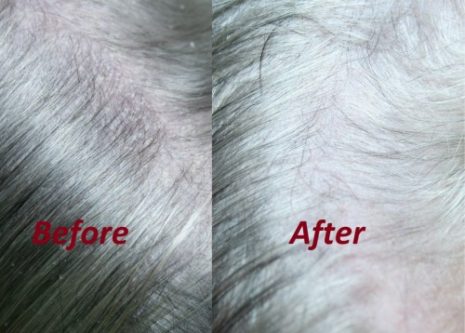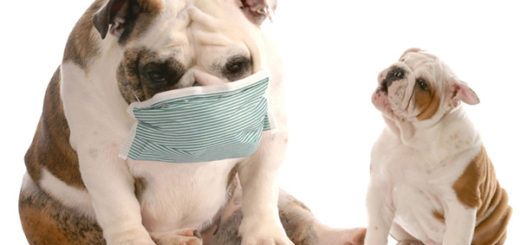10 Ways To Get Rid Of Dry Skin On Dogs
Dry skin, also known as dry seborrhea or dog dandruff, is a condition that is symptomized by skin flaking and skin irritation. There are several methods which have been advanced to cure dry skin in dogs. If the itchy, dry and flaky skin is caused by things such as lack of proper diet or lack of bathing, you can treat your dog using home remedies.
But if the dry skin is caused by diseases such as diabetes mellitus and cancer, it’s good to consult your local veterinarian. Otherwise you can read on below to find out some of the proven 10 ways to get rid of dry skin on dogs.
1. Provide A Balanced Diet For Your Dog
Nutrition cannot be ignored. Lack of balanced diet can cause many conditions on dogs including dry flaky skin. Provide your dog with commercial pet food that’s specifically formulated for dogs. Also, make sure that your dog’s food contains vitamin E, vitamin A, vitamin B-3 (niacin) and protein. You can supplement the diet with omega-3 fatty acids, a protein that has been proven tcure flaky dry skin on dogs faster than even most of the over-the-counter antibiotics. Alternatively, you could check out something like the propower plus digestive dog supplements as these are said to provide dogs with healthy balanced energy and stronger immune system function. You can as well ask the veterinarian on important vitamins and supplements that’s specifically meant for a healthier dog’s coat and skin.
2. Bathe Your Dog Using Warm Water
Itchy dry skin on dogs is sometimes caused by germs and bacteria which have accumulated on fur due to dirt. Bathing your dog with tepid water while using a moisturizing dog shampoo (preferably coal tar shampoo) for dry skin in the water can help remove and kill the bacteria. Don’t use a human shampoo because a dog’s PH is different from that of humans.
Procedures
- Bath your dog while massaging its skin and fur with the shampoo.
- Rinse and wait the fur and the skin to dry.
- Add a moisturizing spray to the dog’s skin (follow the instructions on the spray bottle).
- Bathe your dog only once a month.
3. Use Olive Oil
Olive oil is known for its antiseptic properties and that’s why it’s one of the best home remedies for a scaly and itchy skin on dogs. Olive oil is recommended by vets and you just need to follow the instructions below to get it done.

Procedures
- Pour about 1 tablespoonful (or more depending on the size of the dog) of olive oil over the dogs food once a day.
- Stir the food to ensure that the oil mixes well with the food.
Keep checking your dog’s weight because one tablespoonful of olive oil contains about 120 calories, an amount that’s very substantial for a dog. Dogs just require between 20 to 40 calories per pound of body weight per day.
4. Apply Oatmeal Paste to the Dry Skin
If your dog has a dry skin, you can also try to apply oatmeal paste on his coat. Most skin moisturizers made for humans contain oatmeal due to the fact that this grain has lots of healing properties. This product contains complex carbohydrates known as polysaccharides that can nourish the skin of your canine friend. Also, it contains saponins which acts like a natural detergent that doesn’t have any known side effects. Saponins wash off irritants and dirt from the crusting dog’s skin, reducing dryness and irritation.
Procedures
- Mix equal parts of oatmeal and water.
- Apply the resultant paste directly to the dry spots.
- Leave it for about 10 minutes then rinse it off.
Colloidal oatmeal helps in reducing skin inflammation making your dog to feel more comfortable.
5. Spray Apple Cider Vinegar
Another natural option for treating dry skin on dogs is apple cider vinegar. Just spray the solution onto the dog’s skin and wait for the results. This natural antiseptic works well if it’s combined with another treatment method like the use of antibiotics. The enzymes present in this solution boost blood circulation. Efficient blood circulation inside the body and particularly in the cellular level allows the skin to cure faster. Besides that, apple vinegar is a well-known astringent that’s normally used to clean up bacteria and regulate the PH level of the skin.
6. Brush Your Dog
Dogs with thick fur are more prone to skin related ailments than their counterparts with thin fur. Just by brushing up your dog’s fur, loose hair and dander, that may be the main cause of irritation, are removed with ease. Brushing removes bacteria stuck in the fur. Also, reducing the layer of fur in your dog allows the skin to breathe more easily. Thick fur inhibits seamless release of oils from the dog’s skin. When dirt, dander and loose hair are removed, the skin will be able to secrete oil from its glands making the coat healthier and shiner. Remember to brush your dog once a week or once in two weeks to eliminate these danders that causes the skin to irritate. This irritated skin can lead to some breeds of dog molting more. A lot of molting can lead to the flooring of your home looking dirty. Especially if you have hardwood floors. So consider looking into at this roomba for pets review hardwood floors because you can make an informed choice on what will be for the best for your dog and home. With the right robotic help, you can now focus on treating your dog.
7. Antibiotics
Over-the-counter remedies such as supplements like the ones you can find over on a site like Ultimate Pet Nutrition and antibiotics meant to treat the skin are ideal if the aforementioned home remedy methods fail to work. Antibiotics are perfect if the cause of the flaky, rough skin is an internal’ issue. The vet should examine the dog to know exactly the underlying problem.
Veterinarians can perform several tests to help determine the root cause of the problem before prescribing antibiotics for your dog. The common tests include;
- Skin biopsy
- Blood counts
- Skin scrapings
- Biochemistry profiles
- Skin allergy examination
- Urinalysis
- Parasite skin tests
When inflammation is present, your vet will probably prescribe steroids that will speed the healing process and ease discomfort and itching.
8. Herbal Options
Most herbal products that work well on a human skin are also great for a dog’s coat. Try to find vitamin E that’s available in lotion or pill form. Fish oil also hydrates the skin and helps it to retain essential oils. Tree tea oil can be used to reduce irritation of the skin as it has the ability of killing harmful bacteria and other germs present in the skin.
9. Use Antihistamine
If the dry skin itches alot that the dog becomes restless, you can use an antihistamine drug meant for a dog. Be sure to ask your vet the right kind of antihistamine. Most people normally use Banophen.
10. Anti-Itch Spray
You can also try any of the over-the-counter anti-itch sprays to alleviate the skin irritation as you try to treat your dog using the methods above. This spray can always be used after a conditioner or a shampoo. It’s normally used between baths to get rid of the prickliness. The spray is a medicated solution that contains anti-fungal and anti-microbial properties.
Some Things You Should Know
- Before applying any treatment above, check if the dryness is not linked to allergy.
- Using dog cameras in an area where your dog spends most of the day, can help you track the progress of your dog’s dry skin, it will make it easier to see what works and what doesn’t helping your dog make a quicker recovery.
- You can install a humidifier near the area where you dog sleeps to moisturize the skin.
- Cocker Spaniel, Labrador Retrievers, Terriers and Basset Hound dog breeds are susceptible to genetic cases of dry skin.
- Keep your dog indoors during dry cold weather.
- Neutering can cause dry skin.
- Avoid bathing your dog regularly as over bathing can remove important skin oils.
- Seek help from a vet if the aforementioned methods doesn’t work for your dog.
So if you’ve been asking yourself, what should I do because my dog has a dry skin, you can try one of the methods above. There may be other numerous ways but these ones should get you started.


